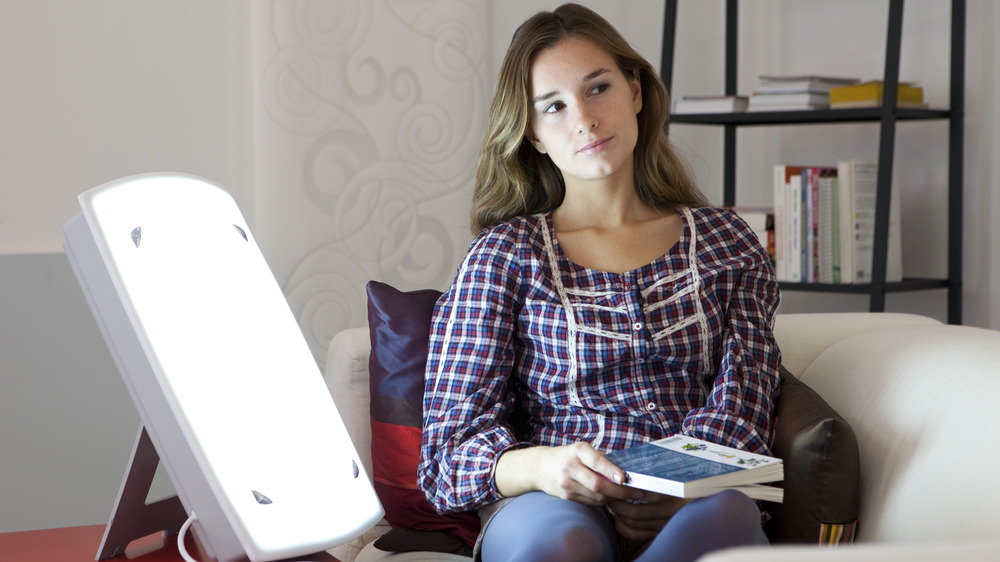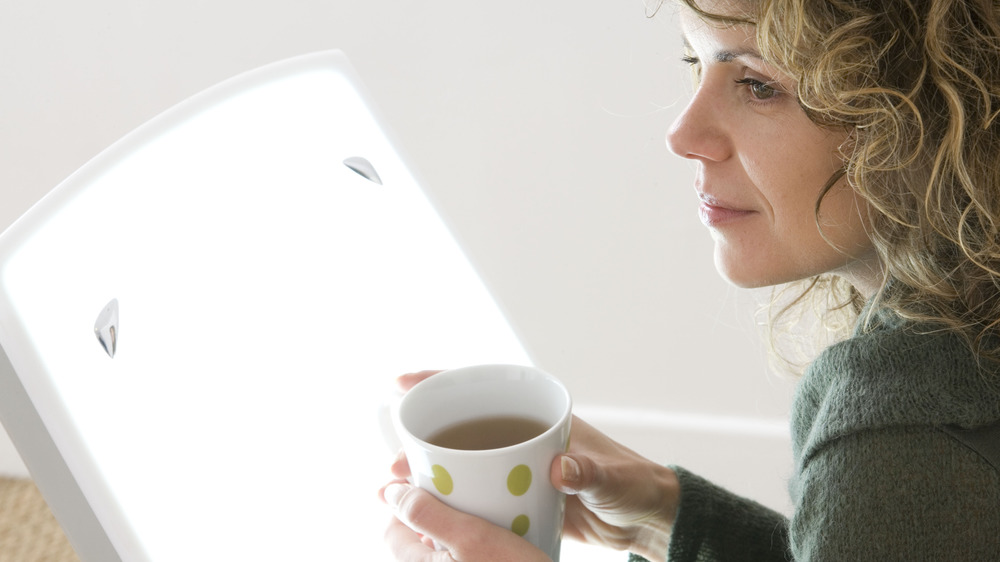Can Light Therapy Really Help You Combat Seasonal Depression?
In just a few days, we will be ushering in the official start of winter. To many, winter is the least favorite of the seasons, marked by bitter cold temperatures, a growing number of blizzards, and the quintessential shortening of daylight hours. Seasonal affective disorder, commonly referred to as SAD, is defined by the DSM-5 as a mood disorder in which depression must be present only during a specific time of year, typically the winter, and resolve fully by another time, usually the spring or summer (via Medscape). There are, of course, more criteria listed such as the need for symptoms to recur for at least two years, but that remains the crux of SAD.
Symptoms of SAD include but are not limited to feelings of depression, changes in sleep patterns, fatigue, decreased energy, irritability, and more (via Verywell Mind). While the exact cause remains unknown, SAD is believed to be the result of the disruption of the body's normal circadian (sleep-cycle) rhythm, which is heavily influenced by sunlight. When operating optimally, the pineal gland, a small gland in the brain, stimulates the production and regulation of the sleep hormone melatonin. The pineal gland is activated when it's dark. When sunlight from the dawn creeps in through the curtains and gets detected by your eyes, melatonin production turns off and you start to wake up.
In the winter, with daylight hours shortening, it's easy to see how the overproduction of melatonin can cause people to sleep more and feel lethargic. Conventional treatment for SAD includes antidepressant medication, psychotherapy, light therapy, or some combination of the aforementioned. Let's take a deeper dive into light therapy.
Light therapy is beneficial for treating SAD
Light therapy doesn't entail sitting by your desk lamp and waiting for a miracle to happen. Instead, light therapy uses light boxes or lamps which produce a very bright white light, in an attempt to mimic natural sunlight (via Harvard Health Publishing). Light therapy is thought to decrease the production of melatonin, helping to regulate circadian rhythms, as well as influencing the "feel-good" hormone, serotonin.
Dr. Michael Terman, head of the Winter Depression Program at Columbia-Presbyterian University, recommends starting light therapy first thing in the morning, with a lamp emitting at least 10,000 lux. Setting the lamp just off to your side is thought to be best, and it is not recommended to look directly into the lamps. Make sure you get at least 30 minutes per day of the bright light, and the good news is, it doesn't need to be all at once.
A recent meta-analysis which examined 19 randomized control trials evaluating the efficacy of light therapy in treating SAD found this form of therapy to indeed be beneficial and effective as a treatment option for SAD (via Psychotherapy and Psychosomatics). So if the change in season has you feeling unlike yourself, grab a specific light therapy lamp, there are a ton on the market, and let the light help you. Of course, if you have any thoughts of harming yourself or others, contact your healthcare provider immediately and they can assist you in getting the necessary help.


